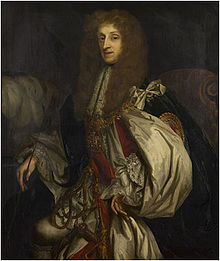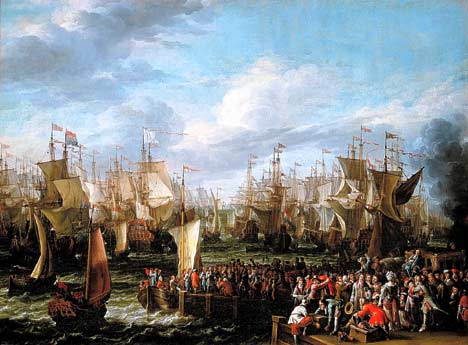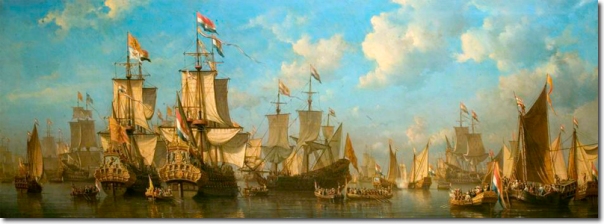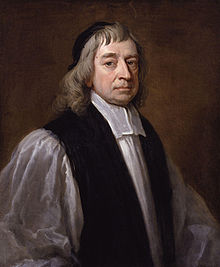The Immortal Seven
Just as we look back to William of Orange as our Great Deliverer there were a number of courageous and visionary men who looked forward to him, and took the bold step of inviting him to in fact invade England. Their names and deeds should be remembered because in reality they represent the first Orange Institution, a group of men who united together in secret to support William of Orange – they were the first Orangemen.
As a lodge and Institution we intend to commemorate a calendar or historical events and to celebrate the lives of historic figures whose actions have preserved the protestant faith and the democracy, and liberty which we all enjoy.
The 30th June is the anniversary of the 1688 invitation from seven English parliamentarians to Prince William of Orange, holder of the post of Stadtholder of the United Provinces. The letter essentially invites William to invade England (and therefore Scotland and Ireland) in order to free the country of the rule of the Catholic and absolutist king, James II, and become the King of England by virtue of his marriage to Mary Stuart, daughter of James II.
This was a dangerous act of treason and the men risked all by doing it. They had seen many even their closest family being executed for far less by the Stuart kings. However such was their fears or a Catholic succession and their hopes of deliverance that they risked all.
Lead Up to Revolution
1660
The monarchy was restored, Charles II came to the throne and the Lords were summoned to Parliament again.
1661
The Cavalier Parliament first met and sat until January 1679: The bishops sat again in the Lords and the Act of Uniformity enforced conformity to the English Church.
1670
Charles II agreed in the secret treaty of Dover to convert to Catholicism in exchange for French subsidies.
1673
Parliament passed a Test Act to prevent Catholics from holding office, by which the successor to the throne, James, Duke of York, had to resign.
1677
Four peers were imprisoned by the House of Lords for claiming that Parliament was automatically dissolved because it had not met for over a year.
1678
Parliament passed a Test Act to prevent Catholics from sitting in Parliament.
1679
The first Exclusion Parliament met: the Commons drafted a Bill to exclude the Duke of York (future James II) from the succession.
1680
The second Exclusion Parliament met: the Exclusion Bill was defeated in the Lords.
1681
The third Exclusion Parliament met at Oxford for only a week, the last time Parliament met outside Westminster.
1681-4
The “Tory reaction”, saw purges, prosecutions, and executions of prominent Exclusionists, or Whigs, as they were now called.
1685
Charles II died in February and James II’s Parliament first met in May, but after November was continuously prorogued until it was dissolved in July 1687.
1686
Godden v Hales allowed James II to dispense individuals from Test Acts. The bishop of London was suspended from his office for not taking action against an anti-Catholic preacher. Here the liberty of the gospel was first attacked as James tried to ban street preaching which exposed the errors of Romanism.
1687
James II issued his Declaration of Indulgence for Nonconformists and sent agents to find potential MPs who would vote for repeal of the Test Acts.
June 1688
The “Seven Bishops” prosecuted by James II for refusing to announce the Declaration of Indulgence in their churches were acquitted.
30 June The “Immortal Seven” sent their invitation to William of Orange to invade England after the birth of James II’s son.
Nov.
William embarked with a vast invasion fleet, landing at Brixham on 5 November, his arrival aided by the Protestant Wind
-Dec. 1688
The “Glorious Revolution” – William of Orange invaded England and James II fled to France. A Convention was summoned to decide the political settlement.
The Immortal Seven
The Earl of Danby
 Thomas Osborne (who signs the letter as Danby) had arranged the marriage which at that time (1677) seemed to ensure that the childless and Catholic James, would not be succeed by a Catholic. The marriage was conducted by Henry Compton who signed the letter as Bishop of London, and who already held that title at the time of the marriage. The letter was drawn up because James II did have a son James (later known as the Old Pretender because of his claims to the English crown, his son Charles was the Young Pretender, also known as Bonnie Prince Charlie) on the 10th June 1688.
Thomas Osborne (who signs the letter as Danby) had arranged the marriage which at that time (1677) seemed to ensure that the childless and Catholic James, would not be succeed by a Catholic. The marriage was conducted by Henry Compton who signed the letter as Bishop of London, and who already held that title at the time of the marriage. The letter was drawn up because James II did have a son James (later known as the Old Pretender because of his claims to the English crown, his son Charles was the Young Pretender, also known as Bonnie Prince Charlie) on the 10th June 1688.
The Earl of Shrewsbery
The Earl of Devonshire
 William Cavendish, major aristocrat and political leader, as were other members of the family, rebuilt Chatsworth House and its grounds as one of the great English country residences.
William Cavendish, major aristocrat and political leader, as were other members of the family, rebuilt Chatsworth House and its grounds as one of the great English country residences.
The Viscount Lumley
Henry Compton (Bishop of London)
Edward Russell
 Descended from a merchant family he was an ancestor of the 19th Century Prime Minister John Russell, the first liberal Prime Minister, and the instigator of the Great Reform Act of 1832; an ancestor of the philosopher Bertrand Russell, himself the father of Conrad Russell distinguished historian and Liberal Democrat politician.
Descended from a merchant family he was an ancestor of the 19th Century Prime Minister John Russell, the first liberal Prime Minister, and the instigator of the Great Reform Act of 1832; an ancestor of the philosopher Bertrand Russell, himself the father of Conrad Russell distinguished historian and Liberal Democrat politician.
Edward Russell’s ancestor William Russell, fought in the 16 Century Dutch Revolt. It was that which made the Dutch provinces of the Spanish Netherlands independent under the leadership of the William, Prince of Orange. It was his descendent William III who was invited to rescue England from absolute monarchy.
Henry Sydney
 It was Henry Sydney who wrote the letter to William of Orange signed by the Immortal Seven, inviting him to invade England in order to end the absolutist monarchy and Catholic tyranny of James II. The courage and action of the Immortal Seven guaranteed parliamentary government and the rule of law in Britain.
It was Henry Sydney who wrote the letter to William of Orange signed by the Immortal Seven, inviting him to invade England in order to end the absolutist monarchy and Catholic tyranny of James II. The courage and action of the Immortal Seven guaranteed parliamentary government and the rule of law in Britain.
His brother was Algernon Sidney, a politician and major republican thinker, who was executed for his supposed links with the Rye House plot to assassinate King Charles II.
The concerns behind the letter were religious and political. James II was a Catholic when the nation had been largely Protestants within the Church of England since the 16th Century. Not only was James a Catholic, he appeared determined to at least give the Catholic church equal status with the Church of England and transfer at least some of what belonged to the national church to the Catholic Church. He increased the rights of Catholics and ‘Dissenters’ (Protestants outside the state church) at the same time in the name of tolerance, but was suspected of wishing sooner or later to force the Catholic Church on England as the only official religion. Given the nature of state church relations at the time, it seems likely that James would have wished to do something like that. He blocked help for Protestant ‘Huguenot’ refugees from France and certainly never asked Louis XIV to adopt religious tolerance while in exile in France.
He looked with envy upon the absolutist manorch of Louis of France. James placed the monarchy above the law and parliament, assuming an unlimited ‘right of dispensation’ to unilaterally repeal any law, and that he assumed the right to put enormous royal pressure on political, legal, religious, military, local governmental and educational state institutions. His behaviour in this regard was so extreme that opposition to his rule grew in a few years from a few ultra-Whigs (advocates of parliamentary rule and rights for Protestants outside the state church) to most Whigs and Tories (advocates of the authority of crown and state church) in Parliament, even though this Parliament was elected on his accession in 1685, in elections he manipulated and which produced an overwhelming majority of strong Tories.
The consequence of James II’s autocracy and political ineptitude was that the signatories of a letter calling for his overthrow include two Tories: Thomas Osborne (signs as Danby) and Compton who as Bishop of London was third in the Church of England hierarchy and therefore closely tied to the Tory cause. James II imprisoned 7 bishops and stationed troops in the City of London (the self-governing part of London which then as now contained the financial and merchant centre of the country). The letter to William refers to liberty, religion and property and James II put an increasing number of natural supporters of monarchy, even those who supported the principle of passive obedience to kings, in intolerable fear in these areas.
The ‘Immortal Seven’ have been somewhat forgotten in British history, and it is a timely reminder to us all that all it takes is seven good men to change the course of history and the future of a nation.
The Glorious Revolution guaranteed parliamentary rule and the supremacy of law over persons in Britain, on the basis that the monarch would share the religion of most subjects of the crown.
Good sources of information on the Glorious Revolution are
Posted on October 22, 2014, in Glorious Revolution and tagged glorious revolution, king william. Bookmark the permalink. Leave a comment.
















Leave a comment
Comments 0